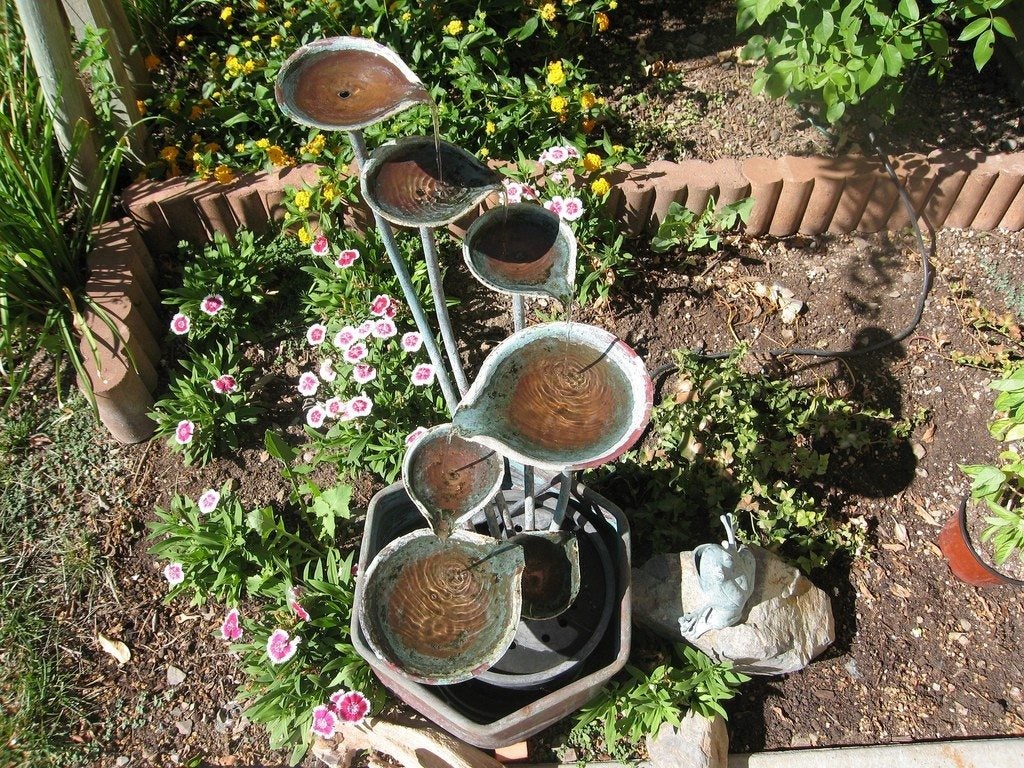Landscaping Features: Creating Features For The Garden


There's much more to gardening than growing plants. Garden features are an important part of the visual design. You want the garden to attract onlookers and remain interesting year-round. Creating features for the garden can help achieve this.
How to Add Interest with Garden Features
From simple paths to complex structures, there's a feature to fit any style or budget. Let's take a look at some popular landscaping features for the garden.
Paths
Boundaries must be marked and paths need to be laid. Most likely, the garden has at least one path. Paths typically serve a practical purpose in the garden, however, they can also become prominent landscaping features used to enhance the overall design. Paths can be made from a variety of materials-- from brick, concrete pavers, and gravel to grass, low-growing groundcovers, and mulch. Like other features in the garden, path materials depend on the surrounding landscape and overall style of the garden.
Rockeries
A rockery, or rock garden, is another attractive feature in any garden. A rockery can be designed on slopes or level ground. A rockery should maintain a natural-looking appearance, so try to use rocks that are natural to your area for the best effect.
Water Features
Water features are always a great way to add interest to the garden. Whether it's still water from a pond or moving water from a fountain, ready-made pond liners, kits, and pumps make this endeavor easy and painless. Large-sized containers and tubs can make great ponds for small spaces too. Sloped landscapes offer the opportunity for creating waterfalls. Fountains are widely available in many styles and sizes to accommodate nearly any garden. They can trickle, spray, bubble, and more. Even a simple water basin or birdbath can become an attractive garden feature.
Bridges
Bridges are another feature for the garden and attractive addition with or without water. They are relatively easy to construct or you can purchase them. Bridges come in many styles to suit any need, from simple and practical to complex and decorative. The style of bridge is usually determined by how it will be used, the area it crosses, and the type of garden. The construction material also depends on the style of garden. For instance, in a natural setting a wooden bridge would be suitable.
Garden Structures
Garden structures such as trellises, arches, and pergolas combine well with walls and fences. These features can also be tailored to fit your needs and gardening style. Garden structures can be purely decorative or serve a practical purpose in the garden such as screening, shade, or support. Adding a garden support, regardless of its simplicity, can help make your garden stand out and look more inviting. Fences and gates have several uses in the garden as barriers, edging, privacy, shade, and shelter from harsh conditions. There are different styles to choose from and all can be acquired from garden centers or handmade from nearly any material. Whatever the choice, however, make sure it complements the rest of the home and garden. For instance, picket fencing is ideal for the cottage garden, while a rustic-looking iron or wooden gate can be charming in a natural country setting.
Gardening tips, videos, info and more delivered right to your inbox!
Sign up for the Gardening Know How newsletter today and receive a free copy of our e-book "How to Grow Delicious Tomatoes".
Garden Furniture
While there is all sorts of garden furniture available at nearly any home and garden center for any garden style, do not be afraid to experiment with creative seating options. Simple, yet sturdy, structures can be easily converted from a variety of materials to complement the style of your garden. For instance, use an old, weathered chair in the garden or even a rustic bench. Transform a large tree stump into a unique resting place by cutting an L-shape into it. If you have two of them, place them side by side and add some wooden planks to create a bench.
Focal Points
Finally, do not overlook the importance of focal points, such as ornaments or statuary, in the garden. Nearly anything goes here, provided it complements the garden surroundings. Adding ornamental features to the garden allows you the opportunity to let your imagination run wild, personalizing the garden. Depending on the style of your garden, this could be a simple placement of a statue or fountain to an interesting collection of bottles scattered throughout the garden. Just make sure that you limit these placements to prevent the garden from appearing too cluttered. There's more to gardening than just plants; creating features for the garden keeps it fresh and interesting year-round.

Nikki Tilley has been gardening for nearly three decades. The former Senior Editor and Archivist of Gardening Know How, Nikki has also authored six gardening books.
-
 Grow ‘Karl Rosenfield’ Peony Plants For The Ultimate Frilly Border Beauties And Cut Flowers
Grow ‘Karl Rosenfield’ Peony Plants For The Ultimate Frilly Border Beauties And Cut FlowersFor frilly double magenta peony petals infused with a heady fragrance, grow ‘Karl Rosenfield’ peony plants. Here’s how to cultivate the ultimate plushy blooms
By Tonya Barnett
-
 10 Common Composting Problems That Can Spoil Your Garden Gold – Plus Easy Fixes
10 Common Composting Problems That Can Spoil Your Garden Gold – Plus Easy FixesLearn how to troubleshoot common composting issues before they ruin your stash – from bad smells and bugs to materials not breaking down as they should.
By Susan Albert